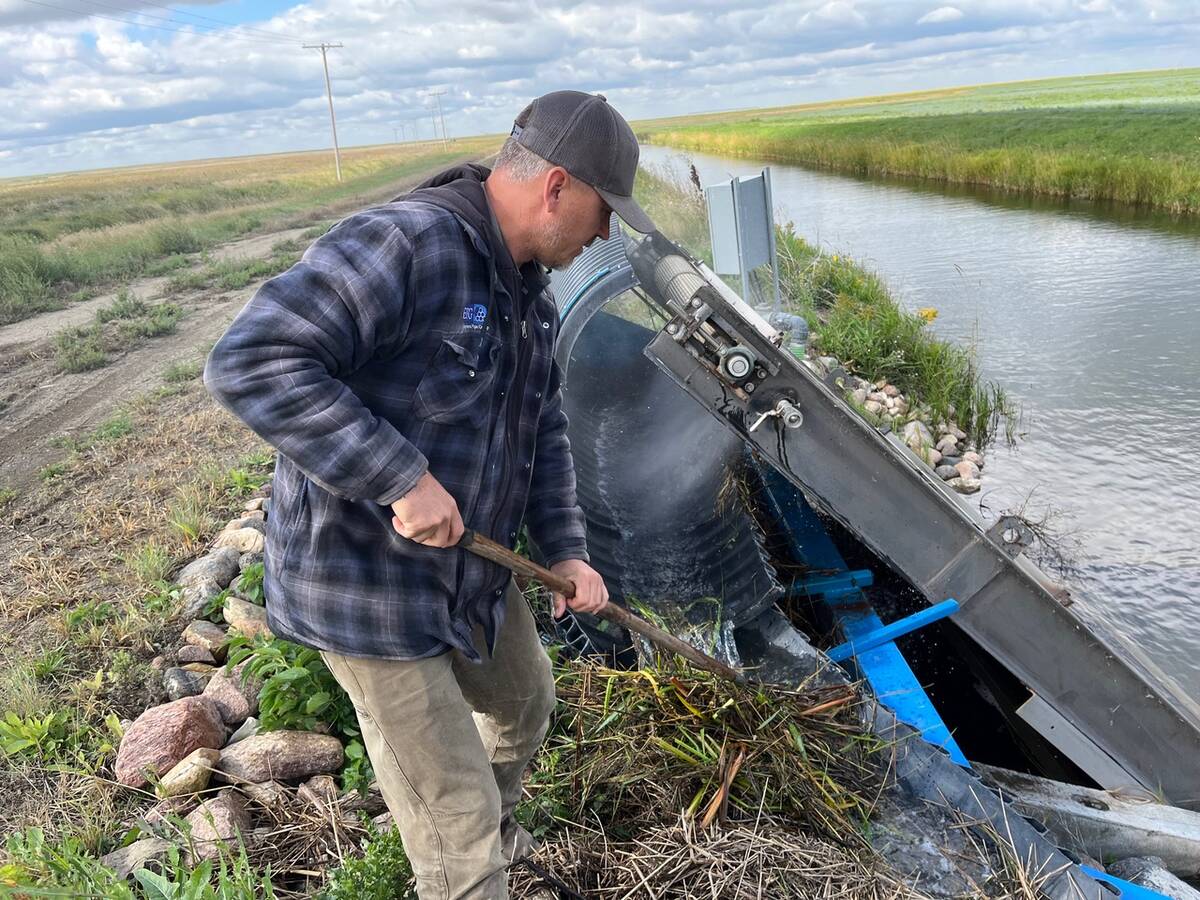A long season of winter cattle feeding has reduced stocks of quality forage and increased the risk of nutrient deficiencies in cattle, such as winter tetany.
Tennis Marx, a livestock agronomist with Alberta Agriculture, said producers should test feed and monitor their herds for signs of tetany and other feed deficiencies.
“Our (provincial agriculture information telephone information centre) is getting calls about (winter tetany),” Marx said.
Winter tetany is caused by an imbalance between the ratio of potassium to calcium and magnesium in feed.
Read Also

Saskatchewan farmer uses tile drainage to manage water
The integration of both irrigation and tile drainage results in higher yields, water efficiency, improved soils and less nutrient runoff, says one producer.
Cereal feeds are generally low in magnesium and can be high in potassium, particularly when grown in potassium-rich soils.
Repeated annual applications of manure can also push potassium levels up, as can drought and high acid soils.
Excessive potassium in a cow’s diet can impede the uptake of magnesium and calcium into the blood.
Low magnesium levels can cause severe muscle spasms that quickly end the animal’s life.
“Usually the farmer’s first sign of a problem is a dead cow in the morning. It’s a hard way to find out there is trouble,” said Marx.
Older cows are most likely to be affected by winter tetany. It is believed that after the first and second pregnancies, magnesium stores in the body become depleted and the older cow’s ability to absorb the mineral is reduced.
Cattle suffering from winter tetany often appear to be paddling on the ground or struggling to get up.
Animals may be quiet, unco-ordinated or unable to stand. Some may have, or appear to have, milk fever because calcium levels are also affected.
“If an animal is down or shows any of these signs, a veterinarian should be called immediately,” said Marx.
Intravenous or subcutaneous administration of magnesium or calcium salts can remedy the problem, but a feed solution needs to be found to prevent more illnesses in the herd.
A rapid method of balancing the feed ration can be achieved by adding magnesium and limestone to the diet, but magnesium is unpalatable and must be mixed with products that cattle will eat.
“It isn’t something you are just going to drop in a feeder or mineral (feeder) and expect the animal to eat by (free) choice,” said Marx.
Animal agronomists recommend that granulated magnesium be used rather than powdered forms, along with limestone and that these be combined with flavouring agents such as molasses.
Feed should normally contain between 1.5 and 1.9 percent pot-assium, on a dry matter basis. Gestating cows require magnesium at 0.12 percent of dry matter intake; lactating animals require 0.2 percent.
Gestating cows require 0.6 percent potassium in their dry matter feed, lactating cows 0.7 percent. Many feeds can contain potassium levels as high as 4.2 percent on a dry matter basis.
Cereal and straw rations also require the balancing of phosphate with calcium. The calcium to phosphate ration should be greater than two.
Trace minerals, salt and vitamins should also be supplemented in the ration. Protein supplements may also be required.
Christoph Weder of Alberta Agriculture said the cost of mineral supplements, flavouring agents and grain processing compare favourably to alfalfa as a nutritional supplement.
“You can feed alfalfa and then feed free choice straw and get very similar results to beef supplements and grain without the side effects of feeding too much grain,” he said.
If greenfeed or forages were raised in or purchased from areas low in soil-available copper then copper should be added.
Weder said the only way producers will be able to tell if they are headed for trouble is to test their rations.
Agronomists recommend buying the best quality of testing to ensure the results are accurate.
Agronomists recommend wet testing systems versus near infrared.
Cows that are genetically inclined to produce greater milk yields are at the highest risk. Tetany may remain a problem for 45 days after calving because the cows continue to demand high mineral concentrations for lactation if access to fresh grazing stands is lacking.
















